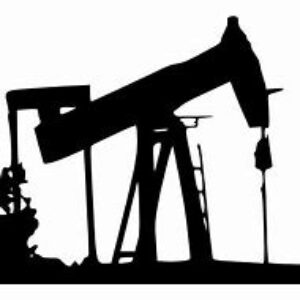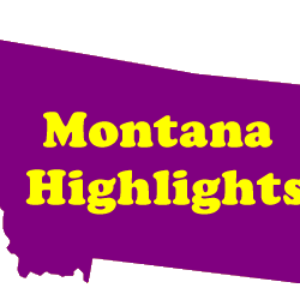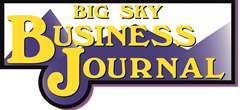By Bethany Blankley, The Center Square
The Texas and U.S. oil and gas industry is pushing back against claims President Joe Biden made after he implemented policies to restrict domestic investment and production.
In his state of the union address, Biden said, “We’re still going to need oil and gas for a while” but also said he planned to tax “the wealthiest and biggest corporations … to pay their fair share.”
He criticized the oil and gas industry, saying, “Big Oil just reported its profits. Last year, they made $200 billion in the midst of a global energy crisis. I think it’s outrageous.”
After his administration instructed banks to not invest in domestic exploration or production and expanded billions of dollars of federal subsidies into so-called renewable energy companies, Biden said, U.S. oil and gas companies “invested too little of that profit to increase domestic production.”
He said he spoke to industry executives who said, “‘We were afraid you were going to shut down all the oil wells and all the oil refineries anyway, so why should we invest in them?’” He replied, “We’re going to need oil for at least another decade … we’re going to need … production.” Instead of the industry investing in the production “to keep gas prices down,” Biden said, “they used the record profits to buy back their own stock, rewarding their CEOs and shareholders.”
As a result, the president proposed quadrupling the tax on corporate stock buybacks “to close the loopholes that allow the very wealthy to avoid paying their taxes.”
In response, Texas Oil & Gas Association president Todd Staples told The Center Square, “Nothing can hide the facts – the president has asked for greater production from foreign countries while at home his administration has cancelled pipelines, delayed permits, removed federal acreage from being leased and discouraged investment in this critical industry. Americans deserve energy security and its long past time this administration treated oil and natural gas like an asset, not a liability.”
The Texas oil and natural gas industry, which leads the U.S. in energy production, paid a record $24.7 billion in taxes and state royalties in fiscal 2022, the highest in Texas history.
“Punitive tax schemes targeting the energy Americans depend upon for daily living will do nothing but lower production and hurt consumers,” Staples added.
Ed Longanecker, president of the Texas Independent Producers & Royalty Owners Association, pointed out the president recognizing “that oil and natural gas is clearly needed” was a “positive” sign but “the timeframe given was completely implausible. Under any realistic scenario, oil and natural gas will continue to play a critical role in meeting global energy demand, providing unprecedented economic contributions for our country and in protecting our nation’s energy security for many decades to come. To say otherwise is simply political rhetoric. Punishing energy producers is only hurting American consumers, driving energy prices higher, and putting our global allies at risk.”
Longanecker also pointed out that “Texas produced a record level of natural gas last year and near record levels of oil, while also contributing record levels of state taxes and state royalty payments.” The industry also responded to and rose above “the inordinate pressure and regulatory burdens it faces from Washington.” It did so as those in the Permian Basin reduced emissions by over 76% and the Texas natural gas industry fueled Europe, he added.
Representing western companies who’ve fought the administration over canceled lease sales and permits, Western Energy Alliance president Kathleen Sgamma told The Center Square, “It’s unfortunate that Democrats feel a need to be hostile to businesses. Enterprises, such as energy companies, produce the goods and services and pay the wages that fund the entire government and non-profit sectors, yet to the president, it is never enough.”
She also noted that “the oil and natural gas industry pays hundreds of billions in royalties, income taxes, severance taxes, property taxes, and fees to federal, state and local governments. It’s interesting how the White House likes to beat up American oil companies when they do well, but never seems concerned in the lean years or when investors take losses. Returning profits to shareholders is necessary at some point, otherwise why would investors risk their money unless there was some return on their money at some point?
“Without people willing to take a risk with their money, there would be no funding of oil and natural gas projects here in the United States and Saudi Arabia would have to supply our oil, with the Saudi government collecting all the taxes rather than the U.S. government. We can produce that oil here in America, generating profits that create jobs and tax revenue and fund pension plans, or we can just send those hundreds of billions of dollars to Saudi Arabia and Venezuela.”
Tim Stewart, president of the U.S. Oil and Gas Association, agreed, telling The Center Square, “Frankly the President is the last person to be providing investment analysis of the oil and gas industry. His administration all but told Wall Street not to invest in our industry because we would be going away under his watch – then he admitted last night that we are going to be around much longer than his presidency will be.
“The same Administration that misread and then mismanaged the worst energy crisis in 40 years and drew down our Strategic Petroleum Reserve to cover their strategic mistakes, while his policies drove prices to record highs is telling us that we need to ‘do the right thing.’ The same person responsible for the largest deficits on record and trillions in special interest payouts is telling the industry that our investment strategy is flawed. Fortunately, Americans aren’t buying what he is trying to sell.”
Richard Welch, a Houston-based 20-year industry executive, told The Center Square, the president’s proposal was “not only unAmerican but also anti-capitalist. Punishing the oil and gas industry for not expanding its operations after his administration repeatedly said it’s trying to end it is hypocritical.”



